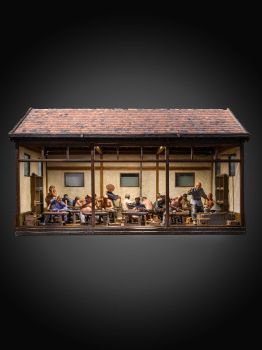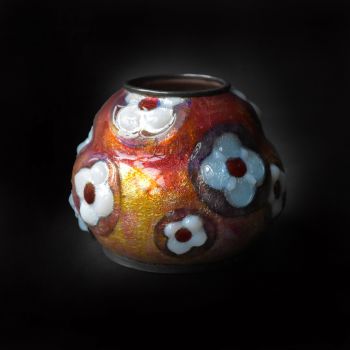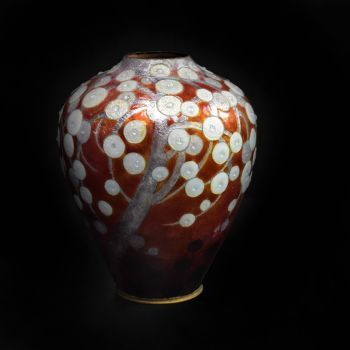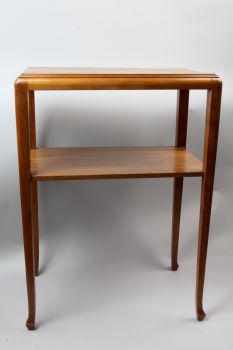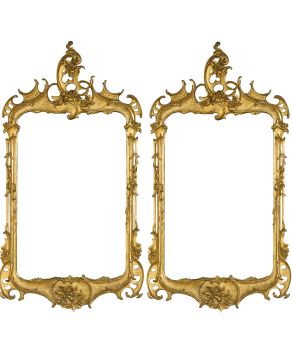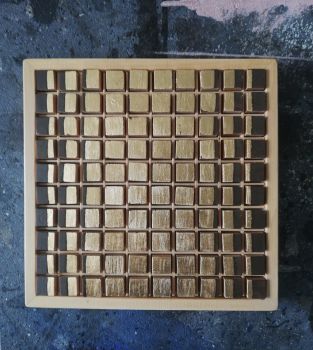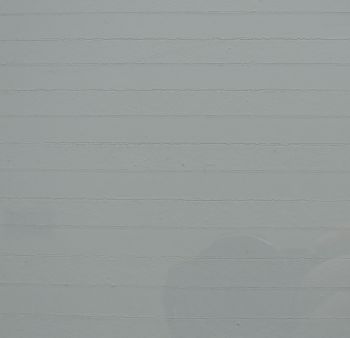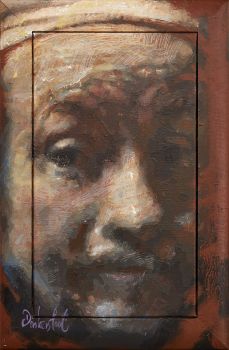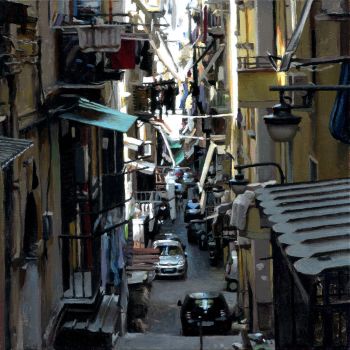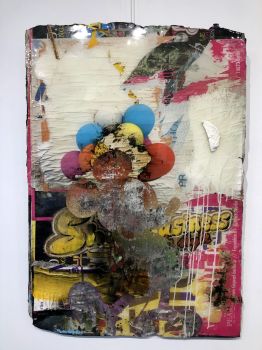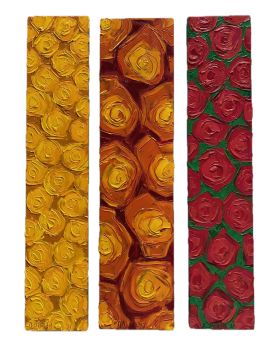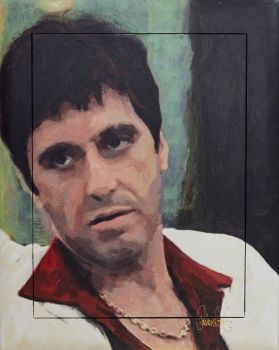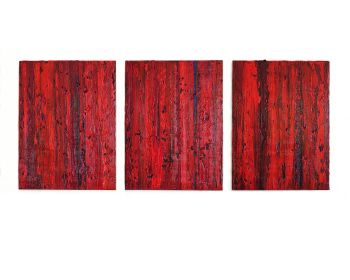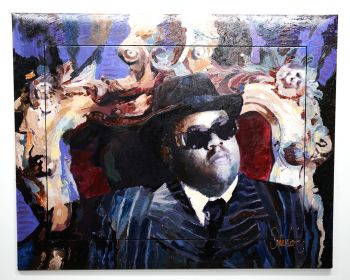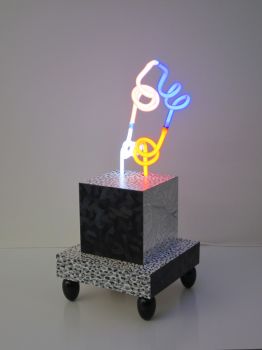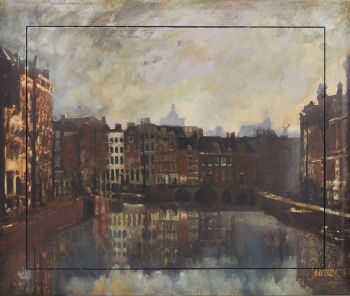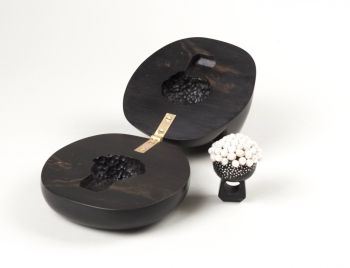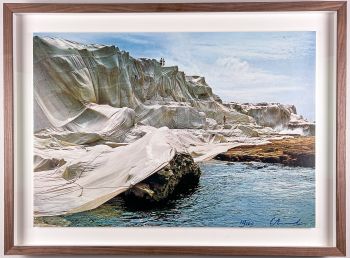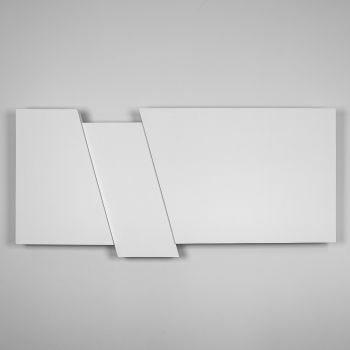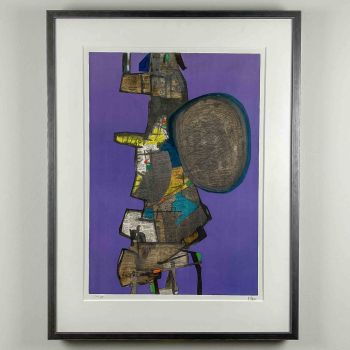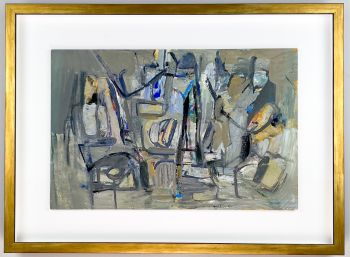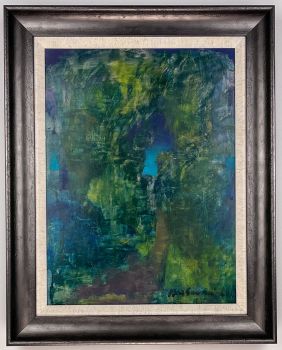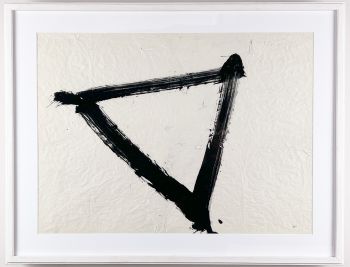A staved teakwood “Congo” icebucket – Dansk Designs, circa 1965 1960 - 1969
Jens Harald Quistgaard
LegnaTeak
40 cm
ConditionVery good
€ 675
Van Kerkhoff Art
- A proposito di opere d'arteA staved teakwood “Congo” lidded icebucket with a black plastic inner liner. Designed by Jens Quistgaard in 1955 and produced for Dansk Designs probably in the late 1950’s or early 1960’s.
These icebuckets were made in three different size ranges, this being a middle sized example. These objects were made with great craftsmanship.
Strips of solid teakwood (staves) were joined together in a traditional way to form the final shape. The craftsmanship originates from the tubing of buckets and barrels and has been practised in Scandinavia since the middle ages.
The ice bucket is branded underneath the base: “four Ducks mark” – which identifies the bucket as an early production piece – Dansk Designs Denmark – JHQ (Jens Harald Quistgaard) and ©.
About Jens Harald Quistgaard
Jens Harald Quistgaard (Copenhagen 1919 – Vordingborg 2008) was a Danish wood-, metal- and glassware designer and sculptor, known principally for his work for the American company Dansk Designs, where he was chief designer from 1954 until 1983. Jens Harald Quistgaard grew up in an artistic family in Copenhagen. His father, Harald Quistgaard, tought him sculpting at a young age. He was educated as a drawer and silversmith at the technical school in Copenhagen. His apprenticeship he served at Georg Jensen Sølvsmidie.
After World War II Quistgaard set up his own design studio in Copenhagen. His breakthrough as an designer came in 1953–54, where he fashioned the cutlery set Fjord, the first cutlery set that combined stainless steel with handles of teak.
In 1954 was awarded the gold medal at the Triennale in Milan for a saucepan design. For two more reasons 1954 became a very important year for Quistgaard. He received the prestigious Lunning Price – informally called the “Nobel price for design” – and he started to work together with the American businessman Ted Nierenberg.
Together they founded the American company Dansk Designs with Quistgaard as chief designer. His designs were an immediate success in the USA and his designs were synonymous with modern living and Scandinavian style, consisting of clean lines, sculptural form and natural materials.
From the 1960’s onward his success in The united States was followed by success in Europe and Japan. Dansk Designs started their own shop in Copenhagen, in London and in Stockholm, and Quistgaard’s designs were exhibited and sold in Tokyo, Berlin, Paris, Zürich, Melbourne, Johannesburg and many other major cities.
Quistgaard remained chief designer for Dansk Designs until the 1980’s. In 1983 he moved to Rome and in 1993 he returned to Denmark.
His work is represented in many museums all over the world, among others: The Louvre, Paris; Designmuseum Danmark, Copenhagen; The British Museum, London; The MoMa, New York City and the National Museum, Stockholm.
Marked
Branded underneath the base:
"Four Ducks" Mark – Dansk Designs Denmark – JHQ (Jens Harald Quistgaard) and ©
Execution
made for Dansk Designs in Denmark, circa 1965
Condition
Good original condition, some minor scratches, stains and dents. Wear consistent of age and use.
Literature
Mel Byars – The Design Encyclopedia, p. 605-606
Dimensions
Height 40 cm - A proposito di opere artista
Jens Harald Quistgaard (23 aprile 1919 - 4 gennaio 2008) è stato un designer danese meglio conosciuto per le sue creazioni per Dansk, dove ha lavorato come capo designer dalla metà degli anni '50 agli anni '80. Durante la sua carriera, Quistgaard ha progettato più di 4000 oggetti, dando un importante contributo al design moderno.
Nato a Copenaghen il 23 aprile 1919, Quistgaard è cresciuto in una famiglia di artisti, dove suo padre, Harald Quistgaard (1887-1979), era uno scultore e sua madre una pittrice. All'età di quattordici anni, Jens Harald Quistgaard iniziò a sperimentare la creazione di gioielli e coltelli. Dopo la sua formazione presso la scuola tecnica, ha lavorato come apprendista presso rinomati artigiani come Georg Jensen e Just Anderson.
Durante la seconda guerra mondiale Quistgaard fu attivo nella resistenza danese. Dopo la guerra, i suoi progetti furono esposti in varie mostre in Europa e negli Stati Uniti.
Una svolta nella sua carriera arrivò con la creazione del set di posate "Fjord" nel 1953, in cui Quistgaard combinava il legno di teak con l'acciaio inossidabile. Il design ha attirato l'attenzione dell'imprenditore americano Ted Nierenberg, che si è rivolto a Quistgaard con la proposta di produrre il set di posate su larga scala. Nasce così Dansk International Designs nel 1954, con Quistgaard nominato capo progettista. Il set di posate Fjord fu introdotto nei negozi americani nel 1956 e divenne rapidamente un grande successo.
Oltre alle posate, Quistgaard ha disegnato per Dansk anche un'ampia collezione di macinapepe, insalatiere e taglieri. Era noto per il suo uso del legno nei suoi progetti, in particolare il legno di teak, ma anche legni più esotici come il wengè, il cocobolo e il palissandro.
Quistgaard ha ricevuto numerosi premi prestigiosi per i suoi progetti innovativi, tra cui medaglie d'oro e d'argento alla Triennale di Milano del 1954 e il Premio Lunning. Nel 1958 è stato insignito del Premio Neimann Marcus. Quistgaard ha continuato a lavorare in Dansk fino agli anni '80, dove ha creato continuamente design innovativi e senza tempo.
L'eredità di Jens Harald Quistgaard vive nel mondo del design, dove le sue creazioni senza tempo e funzionali sono ancora apprezzate dagli appassionati di tutto il mondo. La sua influenza sulla comunità del design danese e internazionale sarà ricordata per sempre.
Sei interessato ad acquistare questa opera d'arte?
Artwork details
Related artworks
Børge Mogensen
Teak wood “dropleaf” desk – Søborg Møbler, Denmark circa 19551950 - 1960
Prezzo su richiestaVan Kerkhoff Art
1 - 4 / 24Artista Sconosciuto
19th C SCALED MODEL OF A CHINESE WORKSHOP WITH 17 POLYCHROMES TERRACOTTA FIGURES1880 - 1900
Prezzo su richiestaSpectandum Gallery
Børge Mogensen
Teak wood “dropleaf” desk – Søborg Møbler, Denmark circa 19551950 - 1960
Prezzo su richiestaVan Kerkhoff Art
Artista Sconosciuto
19th C SCALED MODEL OF A CHINESE WORKSHOP WITH 17 POLYCHROMES TERRACOTTA FIGURES1880 - 1900
Prezzo su richiestaSpectandum Gallery
Artista Sconosciuto
A superb Indonesian royal gem-set gold overlaid silver betel box19th century
Prezzo su richiestaZebregs & Röell - Fine Art - Antiques
Artista Sconosciuto
The Stamford Raffles Secretaires.1800 - 1813
Prezzo su richiestaZebregs & Röell - Fine Art - Antiques
Artista Sconosciuto
UN PICCOLO NETSUKE IN AVORIO DI UN OLANDESE CON UN TAMBURO1750 - 1800
Prezzo su richiestaZebregs & Röell - Fine Art - Antiques
1 - 4 / 24Børge Mogensen
Teak wood “dropleaf” desk – Søborg Møbler, Denmark circa 19551950 - 1960
Prezzo su richiestaVan Kerkhoff Art
1 - 4 / 24- 1 - 4 / 12































